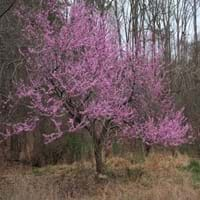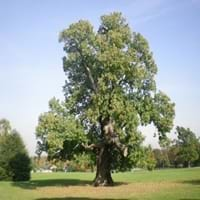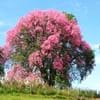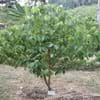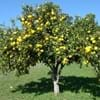Life Span
Perennial
Perennial
Origin
Northeastern United States, Mid-Atlantic United States, Southeastern United States, North-Central United States, Central United States, South-Central United States, Southwestern United States, Canada
China, Korea
Types
Cercis
Not Available
Habitat
Bluffs, stream banks, Wet forest, Woods
disturbed sites, Forest edges
USDA Hardiness Zone
3-9
4-8
Sunset Zone
1a, 1b, 2a, 2b, 3a, 3b, 7, 8, 9, 10, 11, 12, 13, 14, 15, 16, 17, 18, 19, 20
2a, 2b, 3a, 3b, 4, 5, 6, 7, 8, 9, 14, 15, 16, 17
Habit
Oval or Rounded
Spreading
Flower Color
White, Purple, Pink, Light Pink
White, Light Yellow, Ivory
Flower Color Modifier
Bicolor
Bicolor
Fruit Color
Brown, Chocolate
Light Green, Chartreuse
Leaf Color in Spring
Purple, Plum
Green, Gray Green
Leaf Color in Summer
Dark Green
Gray Green, Dark Green
Leaf Color in Fall
Yellow, Yellow green
Yellow, Gold, Tan
Leaf Color in Winter
Not Available
Not Available
Leaf Shape
Heart-shaped
Lobed
Plant Season
Spring, Summer, Fall
Spring, Summer, Fall
Sunlight
Full Sun, Partial Sun
Full Sun
Type of Soil
Clay, Loam, Sand
Clay, Loam
The pH of Soil
Acidic, Neutral, Alkaline
Acidic, Neutral
Soil Drainage
Well drained
Well drained
Bloom Time
Early Spring, Spring, Late Spring
Late Spring, Early Summer
Tolerances
Dry soil, Salt, Soil Compaction, Wet Site
Drought
Where to Plant?
Ground
Ground
How to Plant?
Seedlings, Stem Planting
Seedlings, Stem Planting
Plant Maintenance
Low
Low
Watering Requirements
Requires regular watering, Water more in summer
Do Not over Water, Medium, Requires watering in the growing season
In Summer
Lots of watering
Adequately
In Spring
Ample Water
Moderate
In Winter
Average Water
Average Water
Soil pH
Acidic, Neutral, Alkaline
Acidic, Neutral
Soil Type
Clay, Loam, Sand
Clay, Loam
Soil Drainage Capacity
Well drained
Well drained
Sun Exposure
Full Sun, Partial Sun
Full Sun
Pruning
Remove damaged leaves, Remove dead branches, Remove dead leaves, Remove hanging branches
Prune in fall, Remove damaged leaves, Remove dead branches, Remove dead leaves
Fertilizers
fertilize in growing season, Nitrogen, slow-release fertilizers
Nitrogen, Potassium
Pests and Diseases
Caterpillars, Red blotch, Scale
Beetles, Leafhoppers
Plant Tolerance
Dry soil, Salt, Soil Compaction, Wet Site
Drought
Flower Petal Number
Single
Not Available
Foliage Texture
Medium
Coarse
Foliage Sheen
Glossy
Glossy
Attracts
Birds
Not Available
Allergy
Mild Allergen
Mild Allergen
Aesthetic Uses
Beautification, Bonsai, Landscape Designing, Showy Purposes
Not Used For Aesthetic Purpose
Beauty Benefits
No Beauty Benefits
Not Available
Environmental Uses
Air purification, Prevent Soil Erosion, Shadow Tree
Air purification, Food for animals, Food for birds, Food for insects, Nesting sites for birds, Prevent Soil Erosion
Medicinal Uses
Astringent, Diarrhea, Dysentry, Fever, Leukemia
Low calories, Nutrients
Part of Plant Used
Bark, Buds, Flowers, Seeds
Fruits, Seeds, Stem
Other Uses
Decoration Purposes, Showy Purposes, Used as firewood, Used As Food, Used as Ornamental plant, Used for its medicinal properties, Used for woodware
Food for animals, Used as firewood, Used As Food, Used in biomass
Used As Indoor Plant
Yes
No
Used As Outdoor Plant
Yes
Yes
Garden Design
Feature Plant, Foundation, Mixed Border, Shade Trees
Edible, Feature Plant, Shade Trees, Street Trees
Botanical Name
CERCIS canadensis
CASTANEA mollissima
Common Name
Eastern Redbud
Chinese Chestnut
In Hindi
Eastern Redbud
चीनी अखरोट
In German
OstRedbud
chinesische Kastanie
In French
Redbud Orient
châtaignier chinois
In Spanish
Eastern Redbud
Castaño chino
In Greek
Ανατολική κουτσουπιά
Κινέζικο κάστανο
In Portuguese
Redbud oriental
castanha chinesa
In Polish
Redbud wschodniej
Kasztan chiński
In Latin
Cercis
Chinese Chestnut
Phylum
Tracheophyta
Tracheophyta
Class
Magnoliopsida
Magnoliopsida
Clade
Angiosperms, Eudicots, Rosids
Angiosperms, Eudicots, Rosids
Tribe
Cercideae
Gloxinieae
Subfamily
Caesalpiniaceae
Cassidinae
Number of Species
Not Available
Season and Care of Eastern Redbud and Chinese Chestnut
Season and care of Eastern Redbud and Chinese Chestnut is important to know. While considering everything about Eastern Redbud and Chinese Chestnut Care, growing season is an essential factor. Eastern Redbud season is Spring, Summer and Fall and Chinese Chestnut season is Spring, Summer and Fall. The type of soil for Eastern Redbud is Clay, Loam, Sand and for Chinese Chestnut is Clay, Loam while the PH of soil for Eastern Redbud is Acidic, Neutral, Alkaline and for Chinese Chestnut is Acidic, Neutral.
Eastern Redbud and Chinese Chestnut Physical Information
Eastern Redbud and Chinese Chestnut physical information is very important for comparison. Eastern Redbud height is 760.00 cm and width 760.00 cm whereas Chinese Chestnut height is 1,220.00 cm and width 1,220.00 cm. The color specification of Eastern Redbud and Chinese Chestnut are as follows:
Eastern Redbud flower color: White, Purple, Pink and Light Pink
Eastern Redbud leaf color: Purple and Plum
Chinese Chestnut flower color: White, Light Yellow and Ivory
- Chinese Chestnut leaf color: Green and Gray Green
Care of Eastern Redbud and Chinese Chestnut
Care of Eastern Redbud and Chinese Chestnut include pruning, fertilizers, watering etc. Eastern Redbud pruning is done Remove damaged leaves, Remove dead branches, Remove dead leaves and Remove hanging branches and Chinese Chestnut pruning is done Prune in fall, Remove damaged leaves, Remove dead branches and Remove dead leaves. In summer Eastern Redbud needs Lots of watering and in winter, it needs Average Water. Whereas, in summer Chinese Chestnut needs Adequately and in winter, it needs Average Water.
